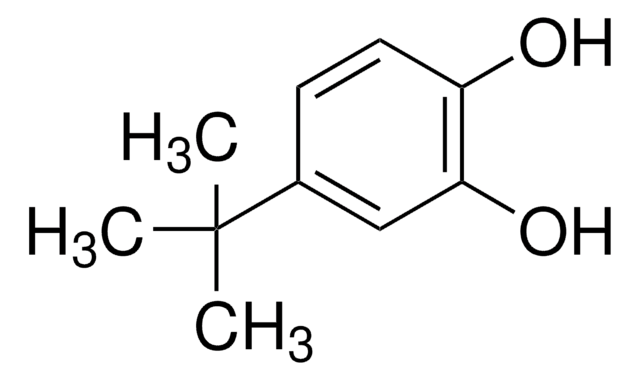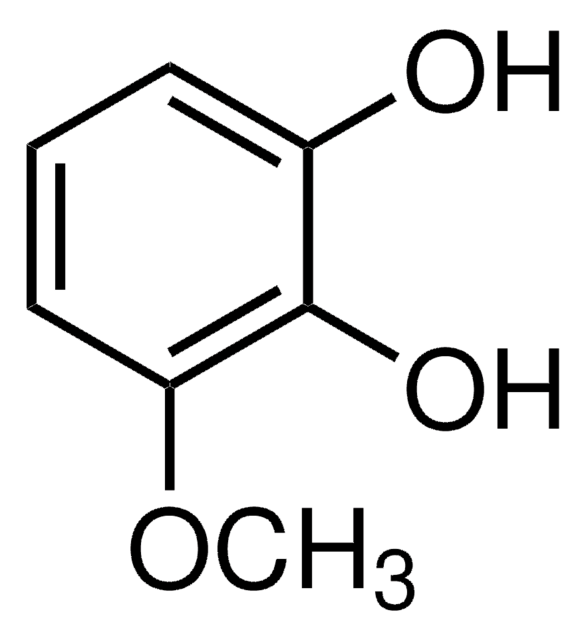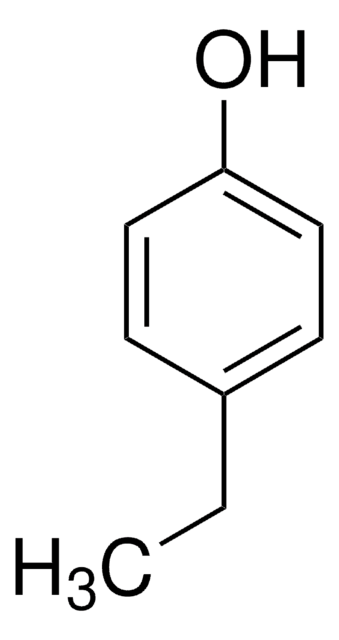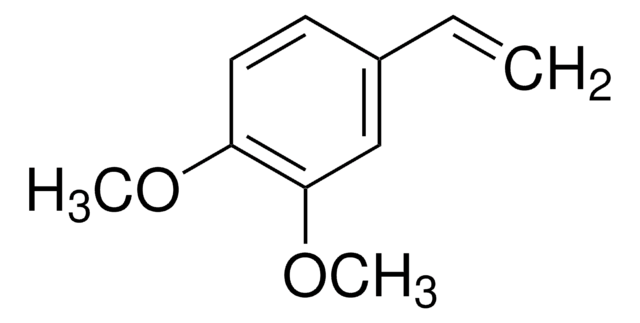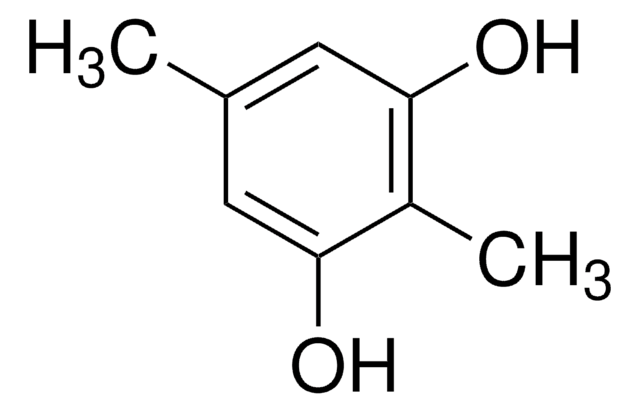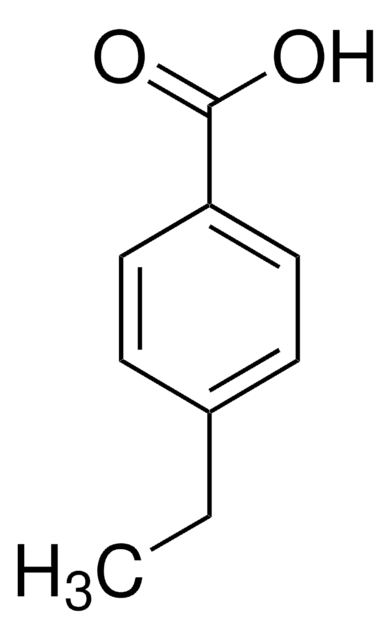683957
4-Ethylkatechin
95%
Synonym(e):
3,4-Dihydroxyethylbenzol
Anmeldenzur Ansicht organisationsspezifischer und vertraglich vereinbarter Preise
Alle Fotos(3)
About This Item
Empirische Formel (Hill-System):
C8H10O2
CAS-Nummer:
Molekulargewicht:
138.16
EG-Nummer:
MDL-Nummer:
UNSPSC-Code:
12352100
PubChem Substanz-ID:
NACRES:
NA.22
Empfohlene Produkte
Assay
95%
Form
solid
mp (Schmelzpunkt)
34-45 °C
SMILES String
CCc1ccc(O)c(O)c1
InChI
1S/C8H10O2/c1-2-6-3-4-7(9)8(10)5-6/h3-5,9-10H,2H2,1H3
InChIKey
HFLGBNBLMBSXEM-UHFFFAOYSA-N
Verwandte Kategorien
Signalwort
Danger
H-Sätze
Gefahreneinstufungen
Acute Tox. 4 Oral - Eye Dam. 1 - Skin Irrit. 2 - STOT SE 3
Zielorgane
Respiratory system
Lagerklassenschlüssel
11 - Combustible Solids
WGK
WGK 3
Flammpunkt (°F)
>230.0 °F - closed cup
Flammpunkt (°C)
> 110 °C - closed cup
Persönliche Schutzausrüstung
dust mask type N95 (US), Eyeshields, Gloves
Hier finden Sie alle aktuellen Versionen:
Besitzen Sie dieses Produkt bereits?
In der Dokumentenbibliothek finden Sie die Dokumentation zu den Produkten, die Sie kürzlich erworben haben.
Kunden haben sich ebenfalls angesehen
Gautam Gaur et al.
Applied and environmental microbiology, 86(5) (2019-12-22)
Phenolic acids are among the most abundant phenolic compounds in edible parts of plants. Lactic acid bacteria (LAB) metabolize phenolic acids, but the enzyme responsible for reducing hydroxycinnamic acids to phenylpropionic acids (HcrB) was only recently characterized in Lactobacillus plantarum
Robert Brüninghoff et al.
Environmental science & technology, 53(15), 8725-8735 (2019-07-10)
We evaluated electrochemical degradation (ECD) and photocatalytic degradation (PCD) technologies for saline water purification, with a focus on rate comparison and formation and degradation of chlorinated aromatic intermediates using the same non-chlorinated parent compound, 4-ethylphenol (4EP). At 15 mA·cm-2, and
Raffaele Guzzon et al.
Journal of food science and technology, 54(3), 810-821 (2017-03-17)
Careful control of spoilage microflora inside wine containers is a key issue during winemaking. To date, attention has been paid to the development of an effective protocol for the eradication of spoilage agents, especially
Mario Malacarne et al.
Food chemistry, 206, 274-283 (2016-04-05)
Commercial tannins from several botanical sources and with different chemical and technological characteristics are used in the food and winemaking industries. Different ways to check their botanical authenticity have been studied in the last few years, through investigation of different
Nicholas S Kruyer et al.
Scientific reports, 10(1), 13367-13367 (2020-08-10)
Microbial production of adipic acid from lignin-derived monomers, such as catechol, is a greener alternative to the petrochemical-based process. Here, we produced adipic acid from catechol using catechol 1,2-dioxygenase (CatA) and a muconic acid reductase (MAR) in Escherichia coli. As
Unser Team von Wissenschaftlern verfügt über Erfahrung in allen Forschungsbereichen einschließlich Life Science, Materialwissenschaften, chemischer Synthese, Chromatographie, Analytik und vielen mehr..
Setzen Sie sich mit dem technischen Dienst in Verbindung.
